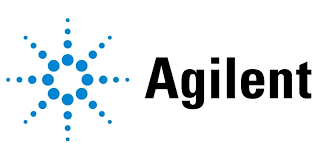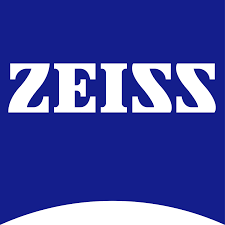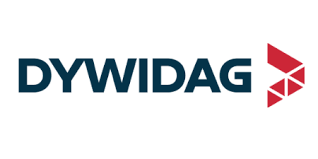Residential Air Purifiers Market Report
Published Date: 02 June 2025 | Report Code: residential-air-purifiers
Residential Air Purifiers Market Size, Share, Industry Trends and Forecast to 2033
This report provides a comprehensive analysis of the residential air purifiers market from 2023 to 2033. It includes insights into market size, CAGR, industry trends, segmentation, regional analysis, and key players, delivering valuable data for stakeholders and decision-makers.
| Metric | Value |
|---|---|
| Study Period | 2023 - 2033 |
| 2023 Market Size | $6.50 Billion |
| CAGR (2023-2033) | 7.2% |
| 2033 Market Size | $13.29 Billion |
| Top Companies | Dyson, Honeywell , Blueair, Philips, Xiaomi |
| Last Modified Date | 02 June 2025 |
Residential Air Purifiers Market Report (2023 - 2033)
Residential Air Purifiers Market Overview
Customize Residential Air Purifiers Market Report market research report
- ✔ Get in-depth analysis of Residential Air Purifiers market size, growth, and forecasts.
- ✔ Understand Residential Air Purifiers's regional dynamics and industry-specific trends.
- ✔ Identify potential applications, end-user demand, and growth segments in Residential Air Purifiers
What is the Market Size & CAGR of Residential Air Purifiers market in 2023?
Residential Air Purifiers Industry Analysis
Residential Air Purifiers Market Segmentation and Scope
Tell us your focus area and get a customized research report.
Residential Air Purifiers Market Analysis Report by Region
Europe Residential Air Purifiers Market Report:
The European residential air purifiers market is forecast to grow from $2.40 billion in 2023 to $4.91 billion by 2033. Strict regulations on air quality and a high focus on health and wellness among consumers are key factors driving growth, particularly in countries like Germany, France, and the UK.Asia Pacific Residential Air Purifiers Market Report:
In the Asia Pacific region, the residential air purifiers market is projected to grow from $1.10 billion in 2023 to $2.25 billion by 2033, reflecting a growing awareness of air pollution and health issues. Countries like China and India are major contributors due to high levels of industrial pollution and urban smog, prompting consumers to seek effective air purification solutions.North America Residential Air Purifiers Market Report:
North America will see growth from $2.12 billion in 2023 to $4.33 billion by 2033. The rise in health consciousness related to allergens and pollutants, alongside robust marketing strategies by leading companies, is expected to foster significant market expansion.South America Residential Air Purifiers Market Report:
The South American market for residential air purifiers is expected to rise from $0.30 billion in 2023 to $0.61 billion by 2033. Demand is primarily driven by urbanization and improved health awareness, along with increased disposable income, especially in Brazil and Argentina.Middle East & Africa Residential Air Purifiers Market Report:
In the Middle East and Africa, the market is anticipated to increase from $0.58 billion in 2023 to $1.20 billion by 2033. Urbanization, rising disposable incomes, and growing awareness of indoor air quality issues are pivotal drivers of market growth in this region.Tell us your focus area and get a customized research report.
Residential Air Purifiers Market Analysis By Product Type
Global Residential Air Purifiers Market, By Product Type Market Analysis (2024 - 2033)
The market is categorized into portable air purifiers, in-duct systems, and fixed installations. The portable segment holds a significant market share, accounting for approximately 63.95% in 2023, and is expected to grow to 63.95% by 2033. In-duct systems, representing office and residential infrastructures, and fixed installations cater to long-term air quality needs, showing substantial growth potential.
Residential Air Purifiers Market Analysis By Filtration Technology
Global Residential Air Purifiers Market, By Filtration Technology Market Analysis (2024 - 2033)
The filtration technologies segment is dominated by HEPA filters, holding a substantial market share of 63.95% in 2023, with a similar expectation in 2033. Activated carbon filters are also significant, representing 25.31% of the market. Ionizers see growth amid increasing consumer awareness of their benefits.
Residential Air Purifiers Market Analysis By Application
Global Residential Air Purifiers Market, By Application Market Analysis (2024 - 2033)
In terms of application, the home use segment is forecasted to dominate the market with a size of $4.16 billion in 2023, increasing to $8.50 billion by 2033. Office use and applications for sensitive individuals exhibit steady growth, commensurate with urbanization and health awareness trends.
Residential Air Purifiers Market Analysis By Distribution Channel
Global Residential Air Purifiers Market, By Distribution Channel Market Analysis (2024 - 2033)
The distribution channels are chiefly online retail, offline retail, and direct sales. Online retail, accounting for 63.95% of market share in 2023, illustrates a growing consumer preference for convenient purchasing methods. Offline retail remains robust, fueled by traditional shopping habits.
Residential Air Purifiers Market Analysis By Price Range
Global Residential Air Purifiers Market, By Price Range Market Analysis (2024 - 2033)
In terms of price range, budget air purifiers dominate the market, comprising 63.95% of the total share in 2023 and expected to maintain this share by 2033. Mid-range and premium segments also show considerable growth due to increasing consumer investment in health-oriented products.
Residential Air Purifiers Market Trends and Future Forecast
Tell us your focus area and get a customized research report.
Global Market Leaders and Top Companies in Residential Air Purifiers Industry
Dyson:
A pioneer in innovative air purification technology, Dyson offers advanced HEPA filtration and smart air purifiers that integrate seamlessly with home applications.Honeywell :
A longstanding leader in air quality solutions, Honeywell provides a range of residential air purifiers known for their reliability and effectiveness in capturing allergens.Blueair:
Blueair specializes in high-performance air purifiers featuring HEPASilent technology, combining mechanical and electrostatic filtration for maximum pollutant removal.Philips:
Philips focuses on health technology and offers a variety of air purifiers that utilize advanced filtration to deliver cleaner air, blending innovation with health benefits.Xiaomi:
Xiaomi has gained market recognition for its affordable yet effective air purifiers that harness smart technology for better air management in homes.We're grateful to work with incredible clients.









FAQs
What is the market size of residential air purifiers?
The global residential air purifiers market is projected to reach approximately $6.5 billion by 2033, growing at a CAGR of 7.2% from 2023. This growth reflects increased consumer awareness about indoor air quality and health.
What are the key market players or companies in the residential air purifiers industry?
Key players in the residential air purifiers market include renowned companies like Honeywell, Dyson, Blueair, and Philips. These companies innovate continuously, enhancing technology and catering to varying consumer needs for air purification.
What are the primary factors driving the growth in the residential air purifiers industry?
Factors driving growth in the residential air purifiers market include rising pollution levels, increased respiratory disorders, and heightened consumer awareness of air quality. Additionally, technological advancements and product innovations contribute to market expansion.
Which region is the fastest Growing in the residential air purifiers market?
The Asia Pacific region shows impressive growth potential in the residential air purifiers market. The market size is expected to rise from $1.10 billion in 2023 to $2.25 billion by 2033, driven by rising health concerns and urbanization.
Does ConsaInsights provide customized market report data for the residential air purifiers industry?
Yes, ConsaInsights offers customized market report data tailored to the specific needs of clients in the residential air purifier industry. This service ensures comprehensive insights and strategies based on unique market requirements.
What deliverables can I expect from this residential air purifiers market research project?
Deliverables from the market research project include comprehensive reports on market size, segmentation analysis, competitive landscape, consumer trends, and forecasts, providing a thorough understanding of the residential air purifiers market.
What are the market trends of residential air purifiers?
Current market trends include increasing adoption of smart air purifiers, a shift toward portable models, and a focus on sustainability. Moreover, online retailing is gaining traction, as consumers prefer convenient shopping options for air purifiers.
